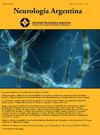Manifestaciones neuropsiquiátricas en el lupus eritematoso sistémico juvenil: estudio observacional
Q4 Medicine
引用次数: 0
Abstract
Introduction
Juvenile-onset systemic lupus erythematosus (SJLE) is a multisystem inflammatory disease, with involvement of neuropsychiatric manifestations (NPSLE) ranging from 37 to 95%.
Objective
To describe the neuropsychiatric manifestations of JLE and the factors associated with its presentation.
Methods
Observational, cross-sectional, retrospective, case-control, retrospective study of patients with a diagnosis of SJSLE by SLICC 2012 and American Collegue of Rheumatology (ACR) criteria seen between 2018 to 2023 in a pediatric referral hospital.
Results
Forty-eight patients with JESL were included, of which 28 (58.3%) presented with NPSLE and 20 (41.7%) were controls. Mean age was similar in both groups (10.8 ± 2.96 years) and female sex predominated (78.6%). Skin symptoms were common in the NPSLE group (75%). Fever was more frequent in controls (P=.03), while serositis affected 75% of patients with NPSLE (P=.006). Leukopenia was observed in 32.1% of patients with NPSLE (P=.02), and anti-P ribosomal antibodies were present in 71.4% of this group, showing a significant association (P<.001). The most common neuropsychiatric manifestations were headache (46.4%) and seizures (17.9%). Most patients in both groups had positive ANA (92.9% in NPSLE and 95% in controls). Treatment focused on hydroxychloroquine (96.4%) and other immunosuppressants such as cyclophosphamide (50%).
Conclusions
Neuropsychiatric manifestations in JSLE pose challenges due to their diversity and lack of consensus on their causal association. Female predominance is notable, with headache as the main symptom, but more specific classifications are needed to better understand their relationship with the disease.
青少年系统性红斑狼疮的神经精神表现:观察性研究
青少年发病的系统性红斑狼疮(SJLE)是一种多系统炎症性疾病,涉及神经精神表现(NPSLE)的比例为37%至95%。目的探讨JLE的神经精神表现及其相关因素。方法对某儿科转诊医院2018 - 2023年根据SLICC 2012和美国风湿病学会(ACR)标准诊断为SJSLE的患者进行观察性、横断面、回顾性、病例对照、回顾性研究。结果纳入48例JESL患者,其中NPSLE 28例(58.3%),对照组20例(41.7%)。两组患者平均年龄相近(10.8±2.96岁),以女性为主(78.6%)。皮肤症状在NPSLE组中很常见(75%)。对照组中发热更为常见(P=.03),而75%的NPSLE患者出现浆液炎(P=.006)。32.1%的NPSLE患者出现白细胞减少(P= 0.02), 71.4%的NPSLE患者出现抗P核糖体抗体,两者存在显著相关性(P= 0.01)。最常见的神经精神表现为头痛(46.4%)和癫痫发作(17.9%)。两组患者均有ANA阳性(NPSLE组92.9%,对照组95%)。治疗重点是羟氯喹(96.4%)和其他免疫抑制剂,如环磷酰胺(50%)。结论JSLE的神经精神表现因其多样性和对其因果关系缺乏共识而面临挑战。女性的优势是显著的,头痛为主要症状,但需要更具体的分类,以更好地了解其与疾病的关系。
本文章由计算机程序翻译,如有差异,请以英文原文为准。
求助全文
约1分钟内获得全文
求助全文
来源期刊

Neurologia Argentina
Medicine-Neurology (clinical)
CiteScore
0.50
自引率
0.00%
发文量
34
期刊介绍:
Neurología Argentina es la publicación oficial de la Sociedad Neurológica Argentina. Todos los artículos, publicados en español, son sometidos a un proceso de revisión sobre ciego por pares con la finalidad de ofrecer información original, relevante y de alta calidad que abarca todos los aspectos de la Neurología y la Neurociencia.
 求助内容:
求助内容: 应助结果提醒方式:
应助结果提醒方式:


